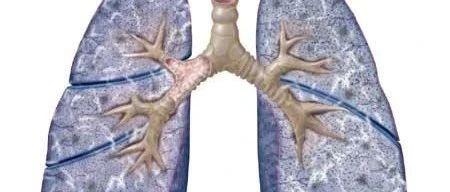Zhang Wei’s Traditional Chinese Medicine Lecture Hall ∣ A Warm Public Account

Systemic Sclerosis (Systemic Sclerosis, SSc), also known as scleroderma, is an immune-mediated rheumatic disease characterized clinically by skin fibrosis, visceral organ, and vascular lesions. The initial clinical manifestation includes skin swelling, which gradually thickens and hardens, ultimately leading to atrophy. This disease can cause multi-system and multi-organ damage, such as to the lungs, gastrointestinal tract, heart, and kidneys. A large body of evidence confirms that 70%-100% of patients with this disease are affected in the lungs, with pulmonary fibrosis accounting for 35% of disease-specific mortality and approximately 20% of total mortality; pulmonary complications are the primary cause of death in SSc patients.
1. TCM Understanding of SSc
SSc falls under the category of “skin bi” (bi syndrome) in Traditional Chinese Medicine (TCM), with interstitial lung changes belonging to the TCM concepts of “lung bi” (肺痹, fei bi) and “lung atrophy” (肺萎, fei wei). Throughout history, TCM practitioners have continuously engaged in clinical practice and systematic summarization of bi syndromes, forming a comprehensive system of theory, methods, formulas, and medicines. Ancient physicians recognized that prolonged bi syndromes could lead to internal transmission affecting corresponding organs; thus, prolonged skin bi can lead to lung bi.
2. The Lung as a Blood Organ
Most ancient physicians discussed the physiological functions of the lungs, stating that “the lung governs qi and controls respiration” and “the lung governs the movement of fluids”; however, few have elaborated on the concept of the lung as a blood organ. Professor Zhang Wei, after reviewing numerous ancient texts and related literature, along with decades of clinical observation and practice, proposed the theory that “the lung is a blood organ” and “the lung generates blood.” The lung’s role as a blood organ is reflected in its participation in the generation of blood throughout the body, where the relationship between qi and blood is crucial, and the movement of blood relies on the propulsion of qi. Modern medicine has also begun to recognize the hematopoietic function of the lungs.
2.1 The Lung Generates Blood
The lungs participate in the process of blood generation in the human body. The material basis for blood generation includes the refined essence, nutrient qi, and body fluids derived from food, all of which are closely related to the lungs. The physiological functions of the lungs determine their ability to generate blood; the lung governs qi, controls respiration, and qi is essential for blood generation. The lungs also regulate the water pathways; when the lung’s body fluids are sufficient, the body fluids and blood share a common source. Lung qi deficiency can affect blood generation, leading to blood deficiency, which in turn fails to nourish the skin, meridians, and organ tissues, resulting in various pathological phenomena.
2.2 The Lung Circulates Blood
The lungs connect to all meridians, allowing them to facilitate the movement of qi and blood. The circulation and distribution of qi and blood are closely related to the abundance of the lung’s zong qi (宗气, ancestral qi). The movement of blood relies on the propulsion of zong qi; the lungs inhale clear qi from the environment and exhale turbid qi from the body, assisting the heart in delivering blood throughout the body. When lung qi is deficient, it struggles to assist the heart in circulating blood, leading to blood stasis.
2.3 Modern Research on the Lung as a Blood Organ
In 2017, Borges et al. utilized two-photon microscopy, in vivo lineage tracing technology, and complex lung transplantation techniques to suggest that the lungs are also a major site for platelet production, contributing to the generation of platelets. Furthermore, this research demonstrated that lung megakaryocytes can completely reconstruct platelet counts in the blood of mice with thrombocytopenia, indicating the presence of hematopoietic progenitor cells in the lungs. Modern studies have confirmed that the lungs are a primary site for terminal platelet production, possessing significant hematopoietic potential.
3. The Theory of Collaterals
Collaterals can be divided into the collaterals of the meridians and the collaterals of the blood vessels, the latter also known as blood collaterals. The collaterals of the meridians facilitate the flow of meridian qi, while the blood collaterals facilitate the flow of blood. The lungs connect to all blood vessels, and all blood passes through the “collaterals” converging in the lungs. Through the lung’s dispersing and descending functions, it inhales clear qi and exhales turbid qi, completing gas exchange between the internal and external environments, introducing clear qi into the blood, and metabolizing turbid qi out of the body, ultimately delivering nutrient-rich blood to all parts of the body. Therefore, the collaterals and the lungs are complementary in physiological structure and function, mutually supporting each other.
4. Conclusion
The lungs are organs rich in qi and blood, with collaterals distributed throughout the body, serving as a bridge and hub between qi, blood, and the organs and tissues. When the lung collaterals are obstructed, qi stagnation and blood stasis become the primary pathogenesis leading to SSc with interstitial lung disease. The lung, as a blood organ and one of the hematopoietic organs, is richly supplied with collaterals, and changes in qi and blood can easily lead to phlegm obstruction and blood stasis in the lungs. Based on the theory of “the lung as a blood organ,” we can better understand the pathogenic mechanisms of collaterals leading to SSc-ILD, while also reinforcing the understanding of “the lung as a blood organ,” thus deepening our understanding of the disease’s progression, aiding in prognosis and outcomes, and providing new directions for clinical treatment of SSc-ILD.
References: Wang Yayun, Zhang Wei. Exploring the Role of Collaterals in Systemic Sclerosis with Interstitial Lung Disease Based on the Concept of ‘Lung as a Blood Organ’ [J]. World Journal of Traditional Chinese Medicine, 2022, 17(15): 2207-2211.

